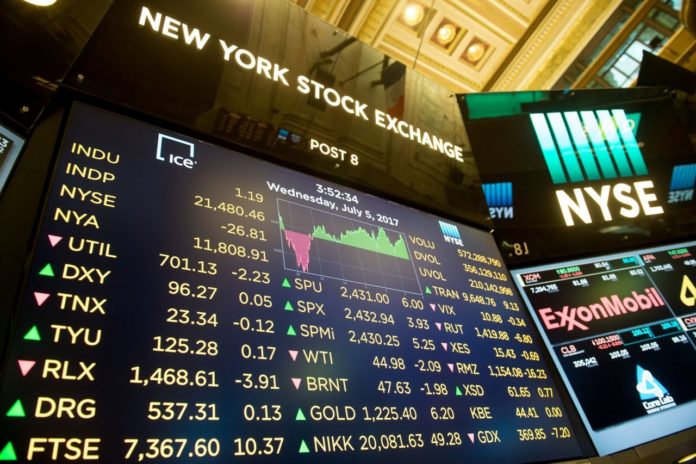Imagine owning a company without having to start a business, invest your life savings, or work long hours?
By owning shares of stock in a venture, you own a percentage of the business, even if it’s small. This ownership can give you tremendous benefits, including your stocks climbing in value and sometimes regular dividend payments.
There is some risk, however, and it can include losing 100% of your investment.
Why You Should Know How to Read a Stock Quote
You might have some stocks in your portfolio, but do you really know what you own? How closely did you look at the stock quote before you made a buy? Did you look at it at all?
If you know how to read a stock quote, you can get a quick picture of a company’s health and worth. You’ll be able to compare its metrics to other company’s stats across the same industry and identify winners, losers, and outliers.
And, once you understand the lingo and context of a typical stock quote, you’ll be able to see at a glance if a stock is a good buy for your current investment strategy.
For some of you advanced investors, this might be a review. But for others, this newsletter is going to answer some questions that you might have been wondering about but haven’t had the time to sit down and research yet.
Elements of a Stock Quote
From the very basics to a deep dive of the numbers, we’ll break down everything you can expect to see in an online stock quote.
Company Name
The first thing you’ll see is the full company name. In the case of Tesla, it’s Tesla, Inc.
Stock Exchange and Stock Ticker
Next, you’ll see which exchange the stock is traded on. It could be NYSE, NASDAQ, S&P, etc. There will also be an abbreviation (either next to the company name or the exchange name) that is the stock’s ticker. It can be one to four letters. For Tesla, the ticker is TSLA.
Price
One of the most prominent sections of a stock chart is the current trading price expressed as a two-decimal figure. Next to the price, you’ll see how much the stock has gone up or down during the day, which is expressed as both a dollar amount and a percentage.
Some stock trading tools will show you the day’s biggest winners or losers based on price fluctuation, which can be invaluable when timing your entry or exit from a stock or finding lucrative investment opportunities.
Open, High, and Low
You’ll get a glimpse of how the stock has moved throughout the day by looking at the opening price, its high, and its low. Often, when the markets open, there will be some upward or downward price movement as investors make their early moves.
There could also be fluctuations throughout the day, depending on news, trading volume, and investor sentiment.
Market Cap
This figure represents the total value of the company and is a calculation that multiplies the stock price by the number of shares outstanding. There are six categories a company could be included in, ranging from nano-cap to mega-cap, but typically, you’ll only hear about the middle three, which are:
- Small Cap | $300M – $2B
- Mid Cap | $2B – $10B
- Large Cap | $10B – $300B
At the time of this writing, Tesla has just surpassed Large Cap and is entering Mega Cap territory.
P/E Ratio
Short for price-to-earnings, the P/E ratio is calculated by dividing the price of one share of stock by the earnings per share for the last twelve months.
In the Tesla example, it looks like this:
1648.39/1.93 = 854.09
So, how do you know if this is high or low (hint: it’s high), and what does that mean exactly?
Let’s first put this P/E ratio into perspective with other high-performing companies. At the time of publication, Amazon has a P/E ratio of 120.85; Apple has a P/E ratio of 34.71; and Proctor and Gamble has a P/E ratio of 27.21.
To put this into context, the P/E ratio reflects the price of the stock relative to how much the company is earning. High P/E ratios suggest that the company is in a high-growth phase, and shareholders are optimistic about the future despite paltry earnings. More mature companies tend to have lower price-to-earnings ratios, but there are also other factors to consider.
What’s important to look at here is the history. Traditionally, the majority of stocks have fallen in a P/E ratio range of between 13 and 15, particularly in the S&P 500.
The high P/E ratios we see today, even among veterans like P&G suggest that the market as a whole may be overvalued, especially in light of decreasing earnings during the global pandemic.
To confirm this, take a look at Proctor & Gamble’s stock price history during the past five years. The price has gone from 68.42 in 2015 to 135.46 today. However, it’s unlikely that the earnings from the company have more than doubled in this short time.
And that brings us to an important lesson about P/E ratios, which can give you incredible insight into whether a company is overvalued. Look at the P/E ratios over time and compare it to the company’s earnings. If the P/E ratio is climbing too quickly, that could signify that the stock is priced out of line with its performance.
Dividend Yield
The dividend yield will show you what percentage of the current stock price is paid in dividends. If you’re wondering how much income you can expect for holding a share of stock, this number will give you the answer.
If a company doesn’t pay dividends, then this section of the chart will have a dash where a number would ordinarily be.
There are mixed views about whether dividend-paying stocks are a good thing. On the one hand, they provide regular and predictable income. On the other hand, it’s possible that the amount paid in dividends causes a corresponding drop in the stock price, making dividends a zero-sum game.
How you feel about dividends usually depends on where you are in your investing journey, how close you are to retirement, and what your goals are. If you’re looking for stock appreciation only, you might prefer a company that reinvests their earnings instead of distributing them. Or, if you like the idea of compounding your stock ownership or getting routine cash disbursements from your investments, then dividends are something you should seek out.
Previous Close
This number shows you what price the stock closed at on the previous day. If today is Monday, then it would be Friday’s close since trading on the leading exchanges doesn’t happen on the weekends.
52-Week High and 52-Week Low
This range will give you an idea of whether the stock price has bounced around during the year, and if so, by how much. It’s helpful to look at how close a stock is trading to the high and low of this period in order to get an idea of investor sentiment.
History and Trend Lines
Even though a stock’s past performance won’t give you a crystal ball into the future, it can give you some context. Free online stock charts allow you to travel back days, weeks, and months into the past and see how a company has performed during these periods.
You can also use these trend lines to determine lines of support and resistance. For example, if a stock price climbs and drops and continues to hit a ceiling consistently, then that would be a line of resistance. It indicates that the stock is having a hard time breaking that barrier. But once it does, it might be due for a big rally.
A line of support, on the other hand, shows where a stock price is flirting with a bottom. If there is support at a consistent level, then you could view the stock as not being likely to drop below that line, and it could be a good time to buy. Or, and this is also likely, a stock could eventually break through its low support level and begin a rapid descent toward zero.
Other Stats
You might also see figures like a one-year target estimate, trading volume, and earnings per share.
- A one-year target estimate will give you an idea of how analysts see the stock one year from now. You can take this information with a grain of salt because investors are going to have varying opinions and motivations for coming up with this figure. But, it can give you a general idea if the “experts” are bullish or bearish about a particular stock.
- Trading volume will tell you how many shares are trading hands each day. Stocks with a high trading volume might have more dramatic price swings. Look for news that’s making people want to sell or share their stock if you see a sudden spike here.
- EPS or earnings per share is how much profit the company is earning for each share of stock. The higher the earnings, the better, but you’ll want to make sure that the EPS is in line with the stock price. You can do this by comparing other stocks in the same industry.
The Bottom Line
You don’t need us to tell you that past performance doesn’t necessarily predict a stock’s future. However, by looking at trends and numerical data, you’ll be able to make determinations about the risk-reward scenario of an investment.








